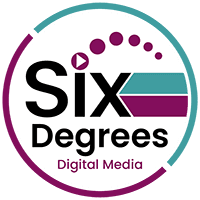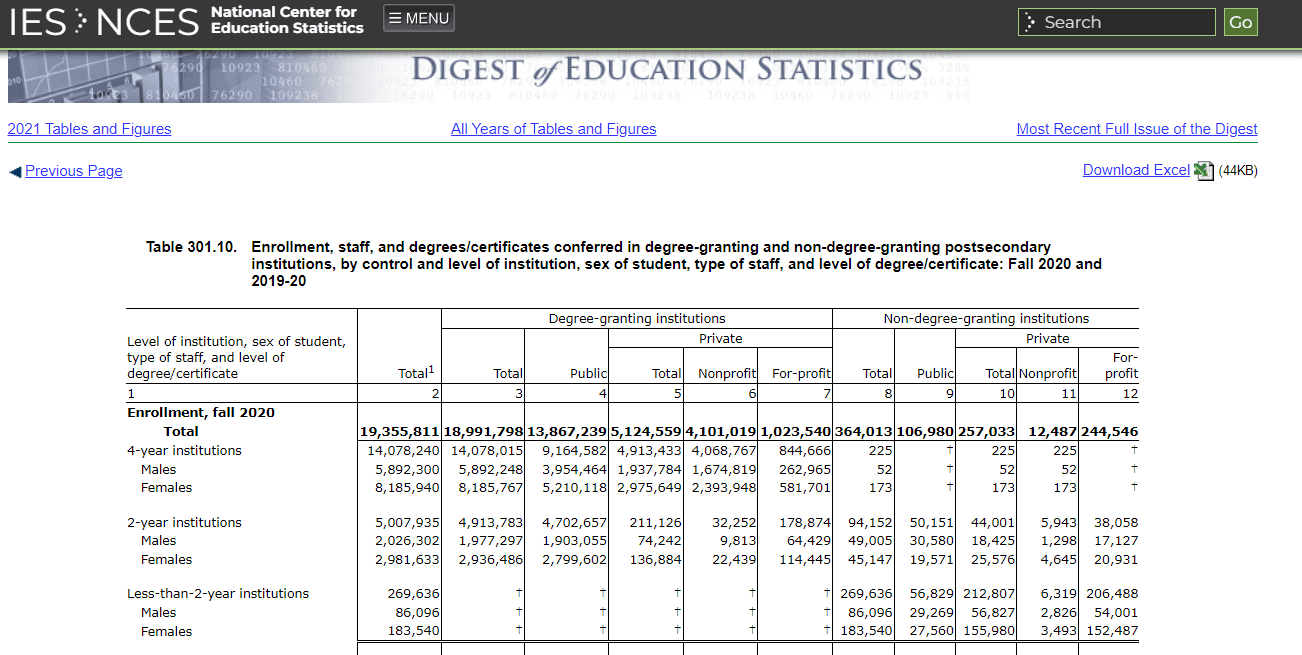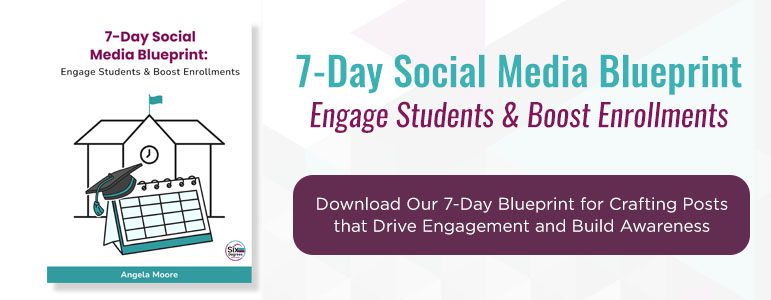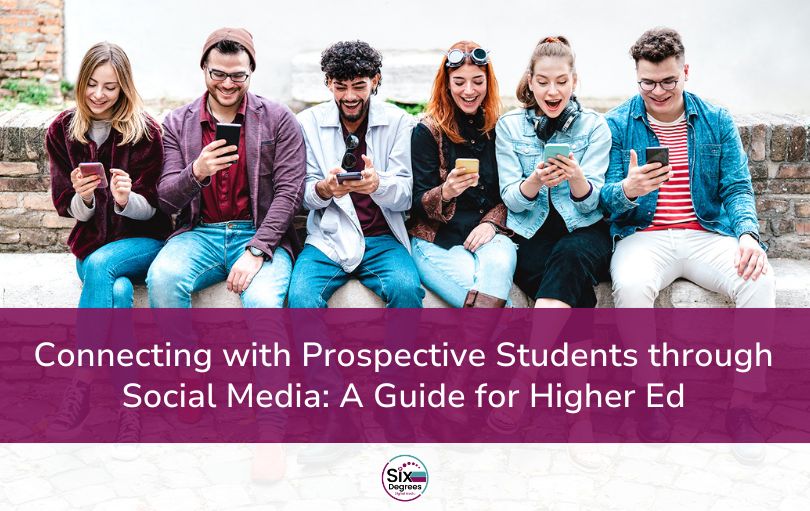Optimizing your digital marketing plan for school enrollment periods is essential to increase student enrollment. By recognizing enrollment cycles and preparing accordingly, you can effectively target prospective students through social media marketing and other digital channels while maintaining a strong presence throughout the year.
Table of Contents:
- Understand Enrollment Cycles
- Plan Ahead
- Monitor Performance and Adjust Tactics Accordingly
- Combat Slow Seasons
- Fostering Collaboration
- FAQs in Relation to Riding the Seasonal Wave: How to Maximize Your Digital Marketing Plan for School Enrollment Periods
- Conclusion
1. Understand Enrollment Cycles
The first step to maximizing your digital marketing plan for school enrollment periods is to get a firm grasp on your institution’s specific enrollment cycles. Have you examined the data to gain a better understanding of when students are most likely to apply and enroll? Different institutions and programs may experience varying peak periods, so it’s crucial that you gather accurate information about your target audience.
To begin this process, analyze historical application and enrollment data from previous years. This will help identify trends in student behavior during different times of the year. For example, some schools may see an influx of applications during early decision deadlines while others might observe higher numbers around regular admission dates or rolling admissions.
- National Center for Education Statistics (NCES): A comprehensive source of education statistics that can provide valuable insights into national trends in college applications and enrollments.
- Common App Research: Offers research reports on application patterns among students using the Common Application platform.
- Institutional Data: Your own school’s records can be a goldmine for understanding past applicant behavior – don’t overlook this essential resource.
Once you’ve gathered relevant data, create visual representations such as graphs or charts to illustrate key findings clearly. This will make it easier for all stakeholders involved in marketing efforts – including yourself. – to understand where resources should be allocated throughout various stages of the academic year.
Beyond just looking at raw numbers, consider other factors that could influence prospective students’ decisions about when they choose to apply or enroll at your institution. For instance, financial aid deadlines, scholarship opportunities, and National Association for College Admission Counseling (NACAC) guidelines can all play a role in shaping enrollment patterns.
In summary, understanding your institution’s unique enrollment cycles is the foundation upon which you’ll build an effective digital marketing plan. Armed with this knowledge, you’ll be better equipped to create targeted campaigns that resonate with prospective students during peak application periods – ultimately boosting enrollment numbers and setting your school up for success.
Key Takeaway:
To maximize your digital marketing plan for school enrollment periods, it’s important to understand your institution’s unique enrollment cycles. Consider other factors that could influence prospective students’ decisions about when they choose to apply or enroll at your institution, such as financial aid deadlines and scholarship opportunities.
2. Plan Ahead
Now that you have a grasp on your institution’s enrollment cycles, it’s time to put that knowledge into action. Planning ahead is crucial for maximizing your digital marketing efforts during peak enrollment periods. To do this effectively, develop a marketing calendar outlining key activities and campaigns tailored to these critical times.
Your marketing calendar should include major milestones in the admissions process, such as:
- Application deadlines: Clearly communicate when prospective students need to submit their applications by using targeted email campaigns and social media reminders.
- Decision dates: Build anticipation around decision dates with engaging content like countdowns or behind-the-scenes looks at the admissions process.
- Orientation periods: Promote orientation events through various channels like blog posts, webinars, and live streams showcasing what new students can expect from campus life.
Beyond these milestones, consider incorporating other noteworthy events into your marketing plan. For example:
- Schedule virtual open houses or info sessions throughout the year;
- Create seasonal promotions for specific programs;
- Leverage national holidays or awareness months relevant to your institution (e.g., National STEM Day).
To ensure success in planning ahead, create a detailed roadmap of all planned initiatives, complete with assigned responsibilities and timelines. This will help keep everyone on track while also providing ample opportunity for adjustments if needed.
A successful marketing plan doesn’t stop at just mapping out strategies; it also requires monitoring and analyzing the results of your efforts. By regularly evaluating campaign performance, you can identify areas for improvement, capitalize on successful tactics, and ensure that your digital marketing strategy remains agile in response to changing trends.
Remember: The key to riding the seasonal wave is staying proactive rather than reactive. Having a detailed strategy in place can help to maximize enrollment opportunities during peak times.
Incorporating noteworthy events into your marketing plan, creating a detailed roadmap of all planned initiatives with assigned responsibilities and timelines, regularly evaluating campaign performance are essential for success in riding the seasonal wave.
3. Monitor Performance and Adjust Tactics Accordingly
As the saying goes, “What gets measured gets managed.” In the world of digital marketing for higher education institutions, this couldn’t be more accurate. To maximize your marketing plan’s effectiveness during peak enrollment periods, it’s crucial to regularly evaluate the performance of your campaigns and make data-informed adjustments as needed.
To get started with monitoring your campaign performance, follow these steps:
- Analyze Key Metrics: Keep a close eye on essential metrics such as click-through rates (CTR), conversion rates, cost per acquisition (CPA), and return on investment (ROI). These will help you gauge how well your marketing efforts are resonating with prospective students.
- Dig Deeper into Data: Don’t just rely on surface-level metrics; dive deeper into analytics to uncover valuable insights about user behavior. For instance, track which social channels drive the most engagement or identify content topics that resonate best with your target audience.
- A/B Test Your Campaigns: Continuously test different elements of your campaigns – from ad copy to landing page design – to determine what works best in driving student enrollment. A tool like Google Optimize can come in handy for running experiments efficiently.
If you notice any areas where performance is lagging or not meeting expectations, don’t hesitate to adjust tactics accordingly. Here are some ideas for fine-tuning strategies based on common challenges faced by colleges and universities:
- Failing Social Media Ads: If certain ads aren’t generating desired results despite having high-quality visuals and compelling messaging, consider revisiting targeting parameters or experimenting with new ad formats like carousel ads or video ads.
- Low Email Open Rates: If your email list isn’t engaging with your content, try segmenting subscribers based on their interests or behaviors and tailoring messages accordingly. Additionally, experiment with subject lines to find what drives higher open rates.
- Poor Conversion Rates: If prospective students are visiting your website but not taking desired actions (e.g., submitting applications), identify potential barriers in the user experience. This could include simplifying forms, improving page load times, or making calls-to-action more prominent.
By regularly monitoring performance and adjusting tactics as needed, you’ll be well-equipped to make the most of your resources during peak enrollment periods – ensuring that every marketing dollar spent contributes to increasing student enrollment at your institution.
Key Takeaway:
Analyzing key metrics, diving deeper into analytics, and continuously testing campaigns can help uncover valuable insights about user behavior. Adjusting tactics accordingly based on common challenges such as failing social media ads or poor conversion rates can also contribute to increasing student enrollment at institutions.
4. Combat Slow Seasons
Even the most well-planned marketing strategies can’t escape the inevitable slow season, but that doesn’t mean you should sit back and twiddle your thumbs. Here are some clever ways to keep interest high during those quieter periods:
Promote Campus Life
Showcase what makes your institution special by highlighting aspects of campus life that continue throughout the year. Highlight the features of your school that continue throughout the year to keep prospective students engaged and interested in enrolling.
Stay Connected
Maintaining contact with prospective students is crucial in keeping them engaged and interested in your institution. Regular communications such as newsletters, social media updates (Sprout Social has some great tips on this.), and personalized emails can make all the difference when it comes to turning an inquiry into an enrollment.
Offer Engaging Content
Create and share content that not only showcases your institution but also helps prospective students prepare for college life. This could include:
- Tips for navigating the application process – consider creating a blog post or video series on this topic.
- Student success stories – real-life examples of how attending your school has positively impacted others’ lives are incredibly powerful.
- Insights into different academic programs – interviews with faculty members or current students can provide a unique perspective on what it’s like to study at your institution.
By implementing these strategies during the slow season, you’ll not only keep prospective students engaged but also ensure that they’re well-prepared and excited about enrolling when the time comes. Remember, even if it feels quiet now, those eager future scholars are out there waiting for the right school to catch their eye – make sure yours is ready and waiting.
Key Takeaway:
When facing a slow season, it’s important to promote campus life and stay connected with prospective students through regular communication. Offering engaging content such as tips for navigating the application process, student success stories, and insights into different academic programs can also help maintain interest in your institution. Remember that even during quiet periods there are eager future scholars out there waiting for the right school to catch their eye – make sure yours is ready.
5. Fostering Collaboration
In the world of higher education, collaboration is key to creating a successful and well-rounded digital marketing plan for school enrollment periods. By collaborating with departments such as admissions, student affairs and academics, a unified message can be crafted which makes the institution more appealing to potential enrollees. By collaborating closely with other departments, your institution can present a unified message to prospective students and make it more appealing.
Here are some tips on how you can foster collaboration among different teams:
- Establish clear communication channels: Set up regular meetings or touchpoints between various departments involved in the enrollment process. This will help keep everyone informed about each other’s activities and progress while ensuring that any issues or concerns are addressed promptly.
- Create shared goals: Develop common objectives for all teams involved in the recruitment process so that everyone is working towards the same end goal – increasing enrollments. Make sure these goals are SMART (Specific, Measurable, Achievable, Relevant, Time-bound) so they’re easy to track and measure success against.
- Promote cross-departmental projects: Encourage team members from different areas of expertise to collaborate on joint initiatives that support overall enrollment efforts. For example, a joint webinar series hosted by faculty members from various academic programs could showcase their offerings while providing valuable information for prospective students.
- Leverage technology tools: Use project management software like Trello or Asana where all stakeholders can easily access updates on ongoing campaigns and share resources such as creative assets or data insights.
Beyond internal collaborations within your institution itself, consider partnering with external organizations too. These partnerships may include local businesses that offer internship opportunities relevant to your courses (a proven way to attract students), or even other educational institutions for joint programs and research initiatives. By showcasing these collaborations, you can demonstrate the value of your institution’s network and its commitment to providing a well-rounded education experience.
In conclusion, fostering collaboration among different departments is crucial in maximizing your digital marketing plan during school enrollment periods. It not only helps create a consistent message but also allows you to leverage the expertise of various teams within your organization. So go ahead – break down those silos and start working together towards achieving higher enrollments.
Key Takeaway:
The experts at Six Degrees Digital Media are here to help you bolster your digital marketing efforts and increase enrollment. Take the guesswork out of your marketing. Contact us today.
FAQs in Relation to Riding the Seasonal Wave: How to Maximize Your Digital Marketing Plan for School Enrollment Periods
What Techniques Can Make Your School Enrollment Marketing Plan More Effective?
To make your school enrollment marketing plan more effective, focus on understanding enrollment cycles, planning ahead, monitoring performance, and adjusting tactics accordingly. Additionally, combat slow seasons with targeted campaigns and foster collaboration between departments for a cohesive strategy.
How Do You Maximize Digital Marketing?
To maximize digital marketing efforts for school enrollments, utilize multiple channels such as social media platforms, email campaigns, content creation (blogs and videos), search engine optimization (SEO), pay-per-click advertising (PPC), and retargeting ads to reach prospective students effectively.
How to Use Digital Marketing for Schools?
Digital marketing can be used in schools by creating engaging content that showcases the institution’s strengths; targeting specific audiences through SEO strategies; using PPC ads to attract interested prospects; leveraging social media platforms like Facebook or Instagram to share stories of success; implementing email campaigns to nurture leads into enrolled students; and tracking analytics data regularly.
What Is the Best Enrollment Marketing Strategy?
An enrollment marketing strategy involves promoting an educational institution’s offerings through various online channels to increase student interest and ultimately boost admissions numbers. This includes utilizing tactics such as SEO optimization, paid advertisements on search engines or social media networks, content creation tailored towards target demographics, and consistent analysis of campaign performance data.
Conclusion
In conclusion, understanding enrollment cycles, planning ahead, monitoring performance, and adjusting tactics accordingly, combating slow seasons, and fostering collaboration are all crucial elements to maximizing your digital marketing plan for school enrollment periods. By implementing these strategies, you can ensure that your institution is reaching its target audience effectively and efficiently during peak enrollment times.
Don’t miss out on the opportunity to ride the seasonal wave of school enrollments. Schedule a complimentary strategy session today to learn more about how we can help you optimize your digital marketing plan to increase student enrollment.










